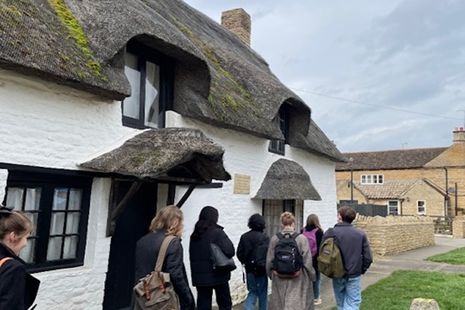It is a rare sunny day in Lent. My boots crunch on the root-filled earth outside John Clare’s cottage, a quasi-comic structure with ceilings just high enough to squeeze a little light in. Having abandoned my audio guide, I am pacing around the garden out back, thinking about madmen and flowers.
The two are not so different, really: both are sapped of life in an existential fit of survival, and eventually die from wintry isolation. I note, with no little pathos, that this characterises much of Clare’s existence: precarious, needy, and heartbreaking. In Heidegger writes eloquently of a Van Gogh painting that, “from the dark opening of the worn insides of the shoes the toilsome tread of the worker stares forth”.

The cottage conjures a similar feeling of a life marked by the stresses and strictures of poverty. But above all, it accentuates the gap between writer and reader; where I most expected to find Clare, he turned out to be as far away as ever. “Like any capitalist scheme, this has its problems” This idea of converting artists’ houses into museums is not a new one.
The novelist Julian Barnes once described it as ‘museumification’ – turning something into a display case, to be shown, ogled at, and charged for. The Viennese, for one, have mastered the art of museumification. There are over ten composers’ houses to visit in Vienna (including Mozart’s, Beethoven’s, and Schubert’s), and that is not even counting Freud’s, or the coffee house which al.
















